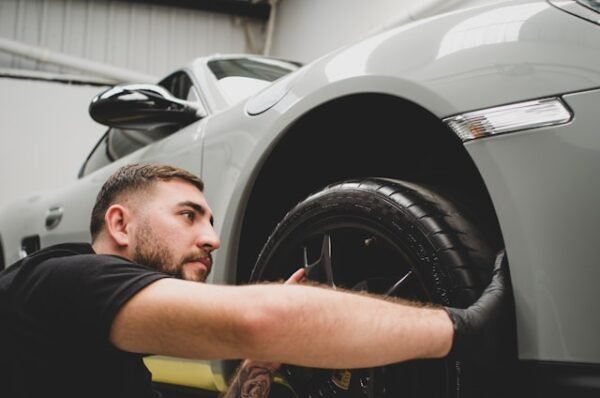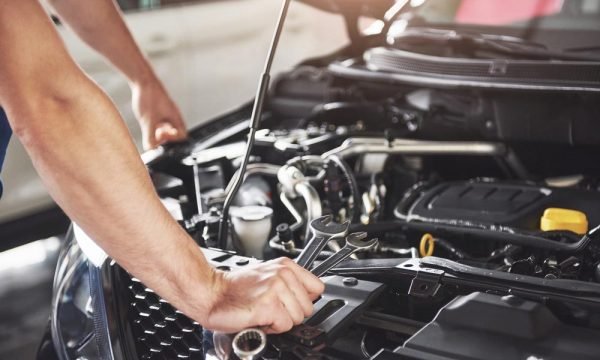When buying a new vehicle, you should always prioritize your safety. With numerous vehicles traveling on roads and highways, it is best to secure your safety by checking the safety equipment that comes with the car.
A seatbelt is one of the most essential safety components, as it protects occupants during a collision. When properly worn, seatbelts distribute the force of a crash across the stronger areas of the body, notably the chest and pelvis, lowering the chance of catastrophic injury or ejection from the car.
A potential car buyer should always inspect the seatbelts as a preventive measure to ensure the vehicle satisfies safety regulations and offers sufficient protection for its occupants. This tutorial covers the significance of seatbelt checks when buying a car and other factors to consider in case of an accident involving seatbelts.
Table of Contents
Understanding Seatbelt Safety
Seatbelts significantly reduce the likelihood of injury or death in an auto collision, making them essential for vehicle safety. Seat belts protect passengers from being swung inside the car or ejected from it, which can result in catastrophic injuries or even fatalities.
Even back then, individuals understood the importance of seatbelts in road safety, as the federal government mandated the installation of lap and shoulder seat belts in the front outboard seats of all newly sold passenger cars in the United States in 1968. Despite this, according to the National Highway Traffic Safety Administration, 11,813 individuals who died in car accidents (45%) were unrestrained passengers in the vehicle in 2021.
This is why having and using seat belts when traveling is crucial. By distributing the force of a collision over the more substantial body regions, such as the chest and pelvis, seatbelts lessen the impact on vital organs and the severity of injuries. Furthermore, by keeping the driver in their seat, seatbelts aid in maintaining control of the vehicle, improve their ability to react to the environment, and maybe prevent more serious collisions.
How to Check a Seatbelt’s Functionality When Buying a Car
When acquiring a car, ensure the seatbelts are working completely to protect your safety and that of your passengers. Here’s how to check a seatbelt’s functionality:
- Check the seat belt for signs of wear, tear, or damage, such as fraying, cuts, or broken stitches. Ensure that the belt retracts smoothly and without any obstructions.
- Place the latch plate into the buckle until you hear a click to test the buckle mechanism. Ensure that the buckle securely holds the latch plate in place without slipping.
- Check that the buckle’s release button smoothly opens the latch plate when pressed. The release mechanism should operate smoothly and without sticking.
- Pull the seat belt entirely out of the retractor and let it retract back into position. The retraction should be smooth and steady, with no jerking or hesitation.
- While wearing the seatbelt, gently tug on it to test the tension mechanism. The belt should lock in place during a quick movement or jolt, replicating real-life emergency scenarios.
- Pull the webbing to guarantee the seatbelt can be suitably tightened or relaxed based on individual preferences.
- Before making a purchase, confirm whether there are any ongoing recalls or safety issues with the vehicle’s seat belts. Check with the manufacturer or online databases for recall information.
By taking these precautions, you can ensure that the seatbelts in the car you purchase are in good operating order and will offer you and your passengers the necessary safety protection when driving.
What Happens If I Get Into a Car Accident and My Seatbelt Malfunctions
Seatbelts are supposed to protect our safety and reduce the severity of an injury in case of a car accident. But what happens if it malfunctions during a crash?
Regardless of who is at fault in the collision, you may file a claim against the vehicle manufacturer to receive compensation for the damages sustained. This is because the defective seat belt contributes to the occurrence and severity of the injuries in a car accident. However, in such cases, you must prove that the seatbelt malfunctioned during the collision to receive compensation for the damages.
If you can, document the malfunctioning seat belt with pictures or videos. Note any information regarding the incident, including the exact time it happened and the issue with the seatbelt. You must also inform the authorities about the accident and the seat belt malfunction. They can include a report that details the problem, which could be important when filing a case.
If the seat belt malfunction caused injuries, you should also speak with a personal injury attorney specializing in auto accidents. They can evaluate your case, counsel you on your legal alternatives, and support you in obtaining compensation for the malfunction-related losses. They can also contact the vehicle manufacturer or a qualified mechanic to report the seat belt malfunction.
Aside from the vehicle manufacturer, you may also pursue a car accident claim against the driver who caused the collision. If your injuries result from a crash from another driver’s wrongful actions or negligence, they should also cover the damage expenses. Usually, their insurance provider will pay for the costs. A personal injury lawyer will also assist in proving the case and negotiating with the insurance company so that you receive fair compensation.
Can I File a Claim for an Accident If I Wasn’t Wearing a Seatbelt?
Generally, you can file a personal injury claim following a car accident if another party’s negligence caused the collision. This negligence can be established by demonstrating that the responsible driver failed to uphold their duty of ensuring safety, directly resulting in the accident and subsequent damages.
If you were not wearing a seat belt at the time of the accident, it could impact your claim. While the other driver’s negligent actions caused the collision, the opposing party may argue that your failure to wear a seat belt contributed to the severity of your injuries, reducing your settlement. However, this depends on the jurisdiction of your state. Some states don’t allow an injured victim to seek compensation, even if they are only partly liable for the crash.
For example, if you didn’t use your seat belt during a collision in California and the court found you 10% liable for the crash, you may receive 90% restitution.
While it can influence your compensation value, not wearing a seat belt shouldn’t negate your right to seek compensation if the crash results from another driver’s negligence. In such a case, consulting with an experienced California car accident lawyer can help you navigate these complexities and pursue the maximum compensation you’re entitled to receive.
Your Rights in a Car Accident With Seat Belt Issues
In auto crashes, seat belts are essential for keeping passengers safe and drastically lowering the possibility of fatalities or severe injuries. Nevertheless, the circumstances around a personal injury claim may become challenging when seat belts malfunction or passengers disregard them.
While not wearing a seat belt may impact a claim’s outcome, it’s important to remember that people are still entitled to compensation for injuries they experience in accidents that are the result of someone else’s carelessness. In such cases, seasoned auto accident attorneys can be of immeasurable aid to victims, assisting them in navigating the legal system, obtaining proof, and fighting for their legal rights. People can work to get the compensation they are entitled to by getting legal counsel as needed.





